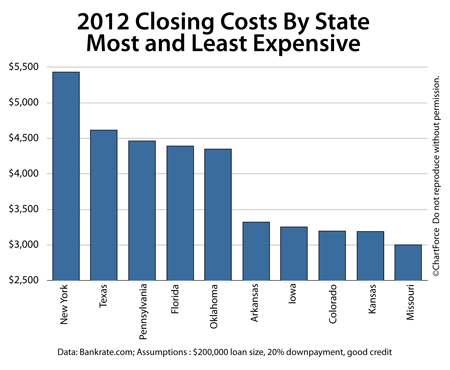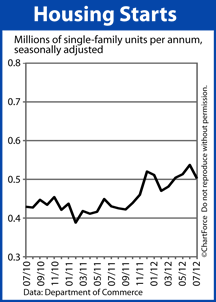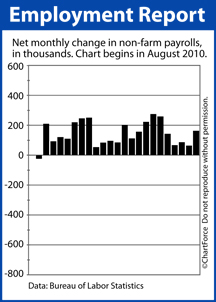
Mortgage rates have been on steady decline in Ohio since the start of 2012 as uncertainty for the future of the Eurozone and questions about the soundness of the U.S. economy have led investors into mortgage bonds in droves, lowering the 30-year fixed rate mortgage to its lowest point in history.
But it’s not just mortgage rates that are down. Closing costs are, too.
According to Bankrate.com’s annual Mortgage Closing Cost Survey, the average mortgage applicant paid seven percent fewer closing costs in 2012 as compared to 2011, on average. The year prior, costs had increased thirty-seven percent, on average.
A “closing cost” is any fee paid in conjunction with a mortgage settlement that would not be payable if the home was financed with cash. Closing costs for purposes of the Bankrate.com survey include such items as underwriting fees and appraisal costs. County transfer stamps, where required, however, were not included.
Like everything in real estate, closing costs vary by locale. There are some states in which closing costs tend to be high, and other states in which closing costs tend to be low.
The five states with the lowest closing costs for 2012, on average, are :
- Missouri : $3,006
- Kansas : $3,193
- Colorado : $3,199
- Iowa : $3,257
- Arkansas : $3,325
By contrast, the two most expensive states in which to close a mortgage this year are New York ($5,435) and Texas ($4,619). All figures assume a $200,000 loan size with 20 percent equity and excellent credit.
The good news is that, as a home buyer or refinancing household, you’re often not required to pay the closing costs which are itemized by your bank. When asked, many lenders will offer a low-closing cost or zero-closing cost option.
With low- and zero-closing cost programs, qualifying mortgage rates are raised by a small amount, which increases your monthly mortgage payment. Up-front settlement costs, however, are reduced or eliminated.
Opting for a low- or zero-closing cost mortgage is a trade-off between upfront costs and ongoing costs. Talk to your loan officer about your options to see which path is best for you.
View average closing costs for all 50 states at Bankrate.com.
 The market for newly-built homes remains strong.
The market for newly-built homes remains strong. Mortgage markets worsened for the third straight week last week as the U.S. economy showed new signs of expansion, and as little new news came from Europe.
Mortgage markets worsened for the third straight week last week as the U.S. economy showed new signs of expansion, and as little new news came from Europe.